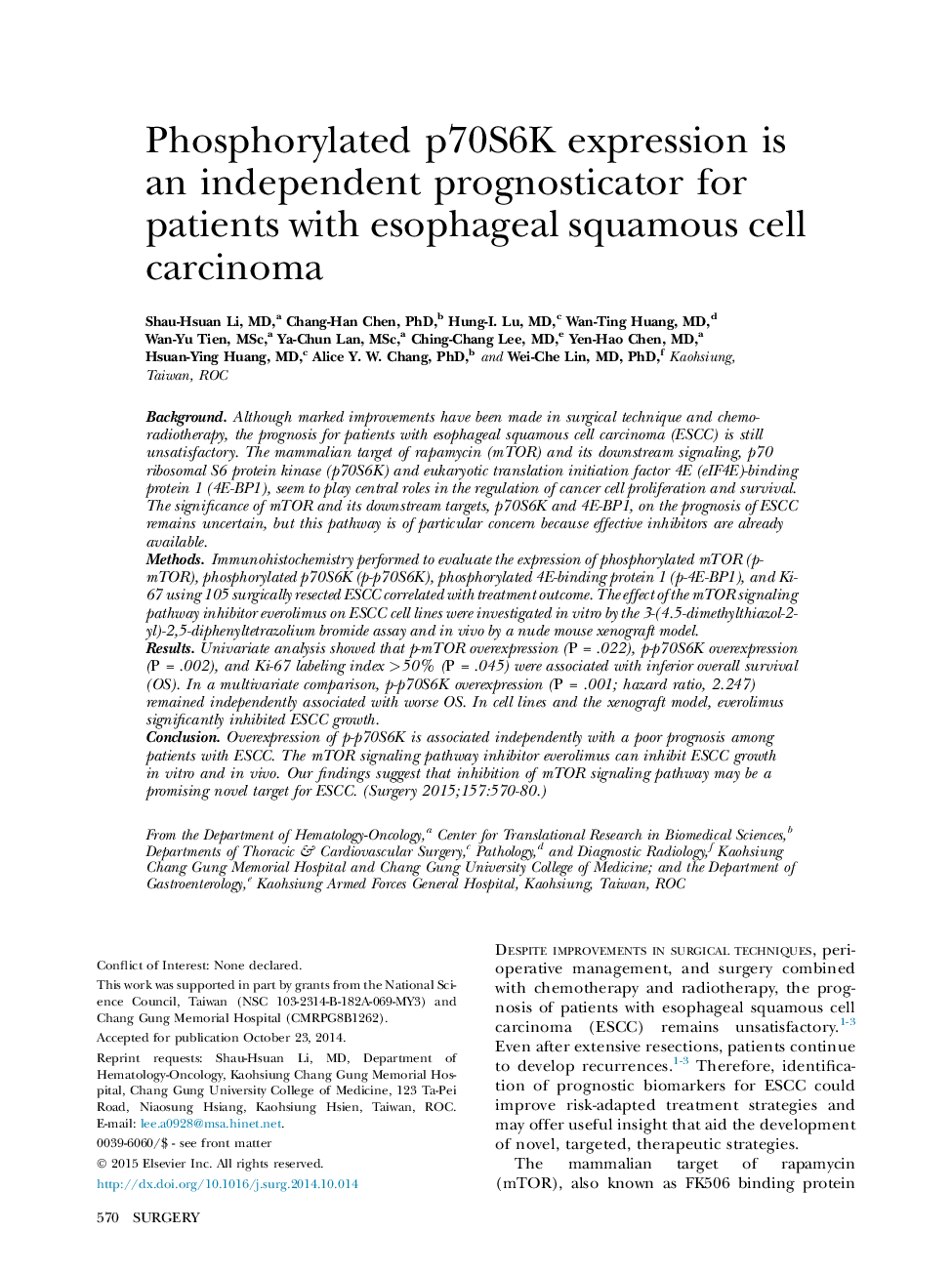| کد مقاله | کد نشریه | سال انتشار | مقاله انگلیسی | نسخه تمام متن |
|---|---|---|---|---|
| 6255431 | 1289239 | 2015 | 11 صفحه PDF | دانلود رایگان |

BackgroundAlthough marked improvements have been made in surgical technique and chemoradiotherapy, the prognosis for patients with esophageal squamous cell carcinoma (ESCC) is still unsatisfactory. The mammalian target of rapamycin (mTOR) and its downstream signaling, p70 ribosomal S6 protein kinase (p70S6K) and eukaryotic translation initiation factor 4E (eIF4E)-binding protein 1 (4E-BP1), seem to play central roles in the regulation of cancer cell proliferation and survival. The significance of mTOR and its downstream targets, p70S6K and 4E-BP1, on the prognosis of ESCC remains uncertain, but this pathway is of particular concern because effective inhibitors are already available.MethodsImmunohistochemistry performed to evaluate the expression of phosphorylated mTOR (p-mTOR), phosphorylated p70S6K (p-p70S6K), phosphorylated 4E-binding protein 1 (p-4E-BP1), and Ki-67 using 105 surgically resected ESCC correlated with treatment outcome. The effect of the mTOR signaling pathway inhibitor everolimus on ESCC cell lines were investigated in vitro by the 3-(4.5-dimethylthiazol-2-yl)-2,5-diphenyltetrazolium bromide assay and in vivo by a nude mouse xenograft model.ResultsUnivariate analysis showed that p-mTOR overexpression (P = .022), p-p70S6K overexpression (P = .002), and Ki-67 labeling index >50% (P = .045) were associated with inferior overall survival (OS). In a multivariate comparison, p-p70S6K overexpression (P = .001; hazard ratio, 2.247) remained independently associated with worse OS. In cell lines and the xenograft model, everolimus significantly inhibited ESCC growth.ConclusionOverexpression of p-p70S6K is associated independently with a poor prognosis among patients with ESCC. The mTOR signaling pathway inhibitor everolimus can inhibit ESCC growth in vitro and in vivo. Our findings suggest that inhibition of mTOR signaling pathway may be a promising novel target for ESCC.
Journal: Surgery - Volume 157, Issue 3, March 2015, Pages 570-580